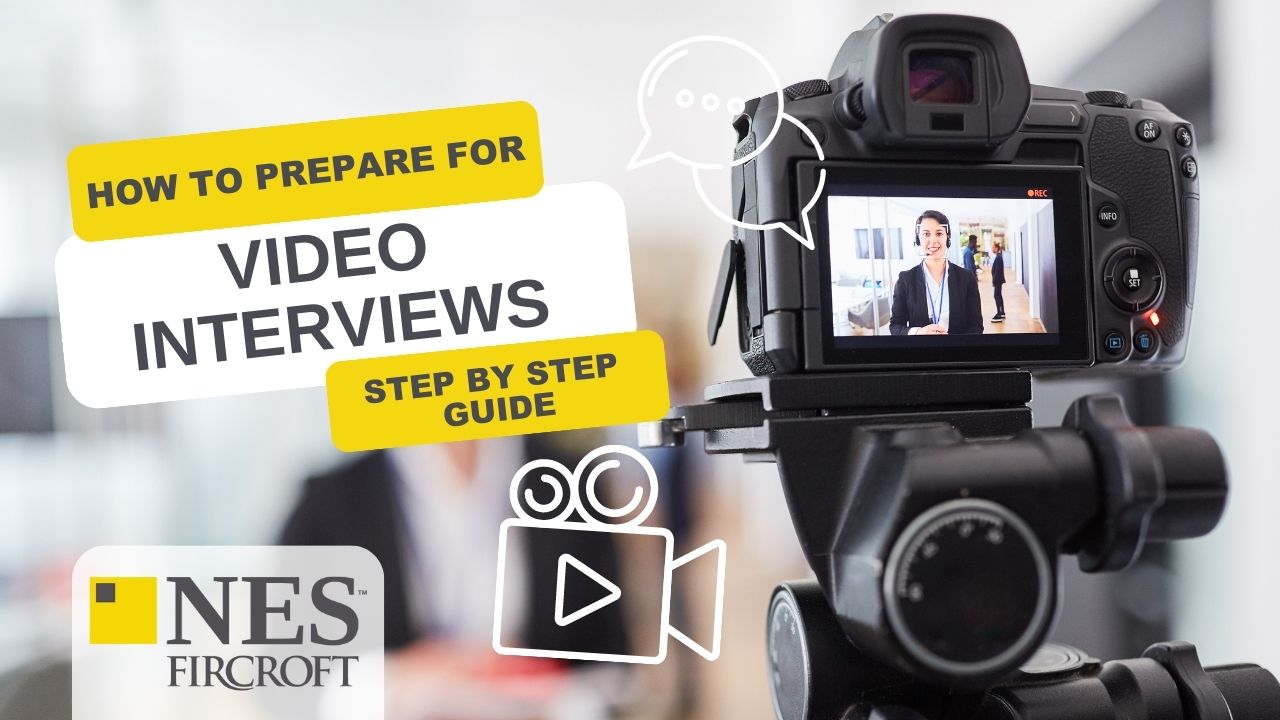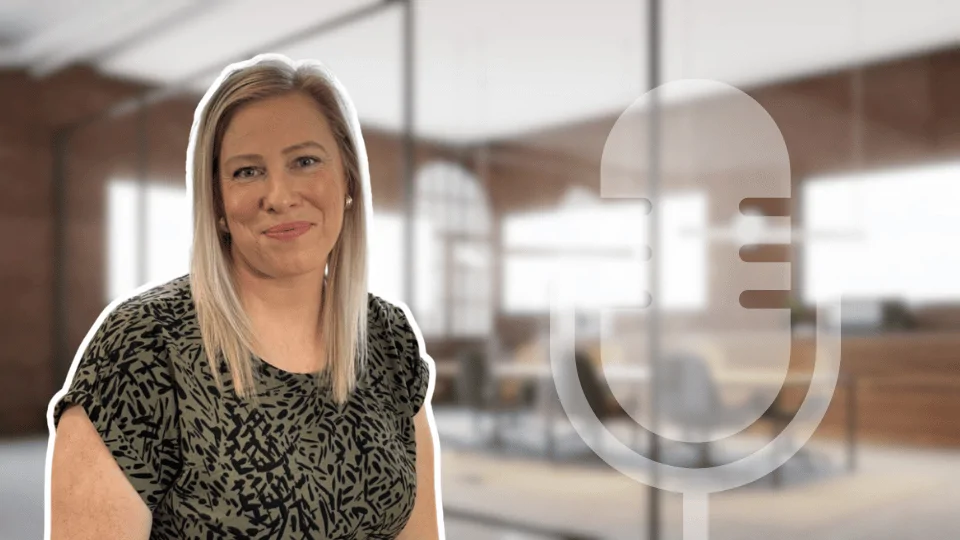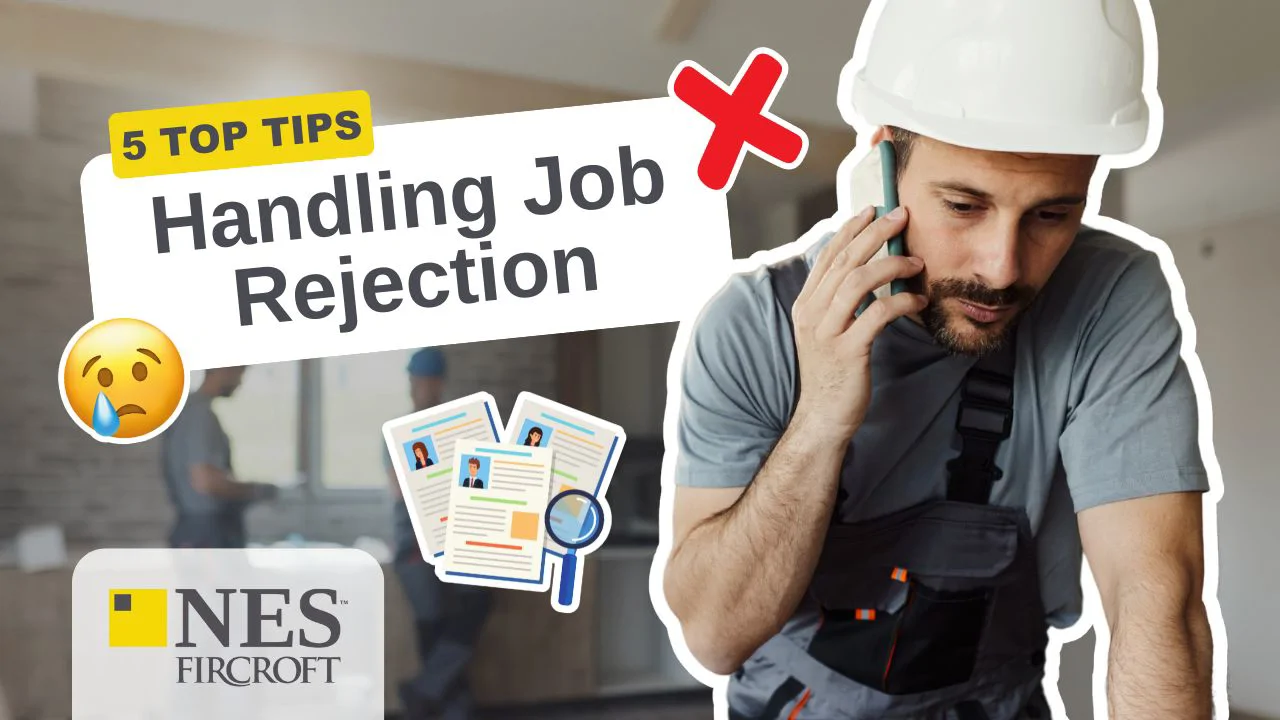A Step-by-Step Guide to Excelling in Video Interviews: Prepare Like a Pro
11 Jul, 20236:37 minutesIn today's digital age, video interviews have become a popular method for employers to scree...

In today's digital age, video interviews have become a popular method for employers to screen and evaluate candidates. Remote working and virtual hiring are commonplace following the pandemic, so it’s essential to master the art of video interviews to increase your chances of success.
This comprehensive guide will walk you through the entire process of preparing for a video interview, ensuring that you showcase your skills and professionalism effectively.
Common types of video interviews
Video interviews come in various formats, each with its own unique considerations. Understanding the different types will allow you to tailor your preparation accordingly.
The first type is the live video interview, where you interact with the interviewer in real time. Treat this type of interview as you would an in-person meeting, ensuring you are well-prepared and ready to engage in a dynamic conversation.
The second type is the recorded video interview. In this format, you are provided with a set of pre-recorded questions and a designated time frame to record your responses. Take advantage of the opportunity to showcase your communication skills by delivering concise and well-structured answers.
Lastly, there are video interviews conducted through specialised platforms that utilise artificial intelligence (AI) technology to analyse your responses. These platforms often focus on non-verbal cues and facial expressions to assess your suitability for the role. Familiarise yourself with the platform's features and guidelines to optimise your performance.
Regardless of the type of video interview you partake in, it’s vital to ensure you’re fully prepared.
Step 1: Set up your interview space
Creating an appropriate interview space is crucial for maintaining a professional atmosphere during your video interview. Follow these steps to ensure you have an ideal setup:
- Choose a quiet location: Find a room or area where you can minimise background noise and interruptions. Inform those around you about your interview to prevent any unexpected disturbances.
- Set up proper lighting: Adequate lighting is essential to ensure your face is well-illuminated and easily visible. Position yourself facing a window or use artificial lighting to achieve a well-lit environment.
- Remove distractions: Clear the area of any clutter or distracting objects. Pay attention to what’s visible in the background, ensuring it’s clean and professional. A plain wall or a neatly arranged bookshelf can serve as appropriate backdrops.
Step 2: Test your equipment
Technical difficulties can be an unwelcome barrier during a video interview. If your interview is live or pre-recorded, to avoid any mishaps, you should thoroughly test your equipment beforehand:
- Check your internet connection: ensure you have a stable and reliable internet connection. If possible, connect your device directly to the modem using an Ethernet cable for a more stable connection.
- Test your camera and microphone: open the video conferencing software you will be using and check if your camera and microphone are functioning properly. Adjust the settings if necessary, ensuring you are both audible and visible.
- Practice with a friend: conduct a test call with a friend or family member to ensure your audio and video quality is clear. Ask for feedback on your appearance, background, and overall presence.
Step 3: Dress professionally
Although you may be participating in the interview from the comfort of your own home, it is crucial to dress professionally to make a positive impression. Your attire must match the professionalism of the interview:
- Dress appropriately for the role: research the company culture and dress code to determine the appropriate level of formality. When in doubt, it’s better to be slightly overdressed than underdressed.
- Choose suitable colours and patterns: opt for solid colours and subtle patterns that aren’t distracting or overwhelming on camera. Avoid wearing bright, neon colours or busy patterns that may divert attention from your face and message.
- Pay attention to grooming: ensure your hair is neatly styled, and if you have facial hair, it is well-groomed. If you wear makeup, keep it natural.
Step 4: Research the company and position
Thoroughly researching the company and position is crucial for demonstrating your interest and suitability for the role:
- Visit the company's website: familiarise yourself with the company's mission, values, products, services, and recent news or achievements. Take note of any specific projects or initiatives that align with your skills and experience.
- Review the job description: Analyse the job description in detail to understand the key responsibilities, requirements, and qualifications. Identify specific examples from your experience that demonstrate your fit for the role.
- Research the interviewer(s): If possible, find out who will conduct or review the interview and research their background and role within the company. This will enable you to tailor your responses and establish a connection during the interview.
Step 5: Practice your interview skills
Just like in traditional interviews, practising your interview skills is essential for success in video interviews. Use the following strategies to refine your technique:
- Prepare responses to common interview questions: research common interview questions and prepare thoughtful, concise responses. Consider using the STAR method (Situation, Task, Action, Result) to structure your answers effectively.
- Conduct mock interviews: enlist the help of a friend, family member, or career coach to conduct mock video interviews. This will help you become more comfortable with the format and receive feedback on your performance.
- Record and review your practice sessions: utilise the recording feature of video conferencing software to record your practice sessions. Review the recordings to identify areas for improvement, such as body language, vocal tone, and clarity of your responses.
- Practice storytelling techniques: engage the interviewer by weaving your responses into compelling narratives. Use descriptive language, vivid examples, and a confident delivery to captivate their attention and leave a lasting impression.
Step 6: Anticipate common interview questions
While it is impossible to predict every question, you will be asked, familiarising yourself with common interview questions can help you prepare effective responses. Consider the following examples:
- Tell me about yourself: craft a concise and compelling introduction highlighting your relevant experience, skills, and achievements. Focus on aspects that are directly applicable to the position you’re interviewing for.
- Why are you interested in this role/company? demonstrate your knowledge of the company and explain how your skills and aspirations align with their values and objectives. Highlight specific aspects of the role that excite you.
- Describe a challenging situation you faced at work and how you resolved it: share a specific example that showcases your problem-solving skills and ability to overcome obstacles. Emphasize the positive outcome and what you learned from the experience.
Step 7: Consider your body language and facial expressions
In video interviews, your body language and facial expressions play a crucial role in conveying your confidence and professionalism. Keep the following tips in mind:
- Maintain eye contact: look directly at the camera when speaking to simulate eye contact. Avoid constantly looking at your own video feed or glancing elsewhere, as this can give the impression of disengagement.
- Sit up straight and maintain good posture: Sit upright with your back supported and your shoulders relaxed. Good posture exudes confidence and attentiveness, contributing to a positive impression.
- Use hand gestures sparingly: While it is natural to use hand gestures during conversations, be mindful of their frequency and intensity. Excessive gestures can be distracting on camera, so use them sparingly and purposefully.
Step 8: Handling technical glitches during the interview
Despite thorough preparation, technical glitches can still occur during a video interview. Here's how to handle them professionally:
- Remain calm and composed: If you experience technical difficulties, take a deep breath, and remain calm. Panicking or becoming flustered will only exacerbate the situation.
- Communicate the issue calmly: If you encounter a technical glitch, politely inform the interviewer of the problem, and suggest a solution. For example, if the audio cuts out, you can say, "I apologise for the interruption. Could we try reconnecting the call to resolve the audio issue?"
- Have a backup plan: Prepare a backup solution in case of major technical failures, such as having a phone number ready to call if the video conference platform becomes unresponsive.
Step 9: Following up after the video interview
After the video interview, follow up with a thank-you note to express your appreciation and reiterate your interest in the position. Follow these steps for an effective follow-up:
- Send a personalised thank-you email: within 24 hours of your video interview, craft a thoughtful and personalised email expressing your gratitude for the opportunity to interview. Highlight specific aspects of the conversation that resonated with you and reaffirm your enthusiasm for the role.
- Reiterate your qualifications and fit: use the follow-up email as an opportunity to reinforce your qualifications and demonstrate your continued interest in the position. Mention any additional information or examples that further support your candidacy.
- Proofread carefully: Before sending your follow-up email, proofread it thoroughly for any grammatical or spelling errors. A well-written and error-free email will leave a positive impression of your attention to detail.
Key takeaways
Video interviews are now an integral part of the hiring process, and excelling in them requires careful preparation and attention to detail. By following the step-by-step guide outlined in this article, you can position yourself as a professional candidate ready to excel in video interviews. Remember to:
- invest time in setting up your interview space,
- test your equipment,
- dress professionally,
- practise your interview skills,
- research the company and position,
- anticipate and prepare for common interview questions,
- manage your body language and facial expressions,
- have a back-up plan for technical glitches,
- and follow up with the interviewer a day or two after the interview.









